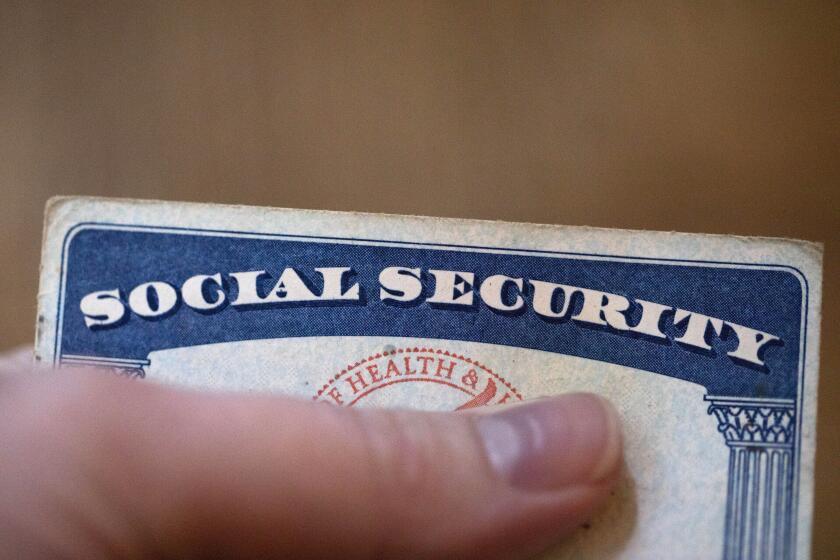Don’t run out of money in retirement: Here’s how much to use per year, and why

Dear Liz: I am confused about “safe withdrawal rates” from retirement accounts. I’ve read that withdrawing 4% of savings each year is the gold standard that financial planners utilize to ensure that life savings are preserved in retirement.
However, if the Standard & Poor’s 500 index returns on average 8% a year, and if the life savings are locked down in a mutual fund that is indexed to the S&P 500, then shouldn’t the annual withdrawal amount, to preserve those savings, be 8%? Limiting my withdrawals to 4% means my retirement would be pushed several years down the road. Can you clarify?
Answer: It’s good you asked this question before you retired, rather than afterward when it might have been too late.
You’re right that on average, the S&P 500 has returned at least 8% annualized returns in every rolling 30-year period since 1926. (“Rolling” means each 30-year period starting in 1926, then 1927, then 1928, and so on.)
But the market doesn’t return 8% each and every year. Some years are up a lot more. And some are down — way down. In 2008, for example, the S&P 500 lost about 37% of its value in a single year.
Such big downturns are especially risky for retirees, because retirees are drawing money from a shrinking pool of assets. The money they withdraw doesn’t have the chance to benefit from the inevitable rebound when stock prices recover. Bad markets, particularly at the beginning of someone’s retirement, can dramatically increase the odds of running out of money.
Inflation also can vary, as can returns on cash and bonds. All these factors play a role in how long a pot of money can be expected to last. The “4% rule” resulted from research by financial planner William Bengen, who in the 1990s examined historical returns from 1926 to 1976. Bengen found there was no period when an initial 4% withdrawal, adjusted each year afterward for inflation, would have exhausted a diversified investment portfolio of stocks and bonds in less than 33 years.
Some subsequent research has suggested a 3% initial withdrawal rate might be better, especially for early retirees or those with more conservative, bond-heavy portfolios.
Free online calculators can give you some idea of whether you’re on track to retire. A good one to check out is T. Rowe Price’s retirement income calculator. But you’d be smart to run your findings past a fee-only financial planner as well. The decisions you make in the years around retirement are often irreversible, and what you don’t know can hurt you.
Deciding when to claim Social Security benefits
Dear Liz: In a recent article you discussed delaying Social Security benefits and wrote that for married couples, only the higher earner needs to wait until age 70 to get the largest possible check. I don’t understand the logic behind that statement.
I have always been told to wait until 70 to collect; however, my husband is the higher wage earner. Wouldn’t I still benefit from waiting until 70? If he is a few years younger than me, does that make a difference? If I don’t have to wait until 70, I am all for collecting at 66.
Answer: As you know, each year you delay boosts the check you get by roughly 7% to 8%. That’s a guaranteed return you can’t match elsewhere and why many financial planners encourage clients to delay claiming if they can. The “break-even” point — where the benefits you pass up are exceeded by the larger checks — can vary depending on the assumptions you make about investment returns, inflation and taxes. Generally speaking, you’ll be better off delaying until at least 66 if you live into your late 70s. If you delay until age 70, when your benefit maxes out, you’ll pass the break-even point in your early 80s.
None of us has a crystal ball, of course, and planners make the argument that Social Security should be viewed as longevity insurance: The longer you live, the more likely you are to spend your other assets and depend on your Social Security for most or all of your income. Given that reality, it makes sense to maximize that check.
That’s true for all individuals claiming Social Security, but married couples have another complication. When one dies, the other will have to get by on a single check — the larger of the two checks the couple was receiving. That’s the check that should be maximized, so it’s more important that the higher earner delay than that both spouses delay.
If you want a more detailed discussion of the issue, read financial planner Michael Kitces’ blog post “Why it rarely pays for both spouses to delay Social Security benefits” at kitces.com.
Liz Weston, certified financial planner, is a personal finance columnist for NerdWallet. Questions may be sent to her at 3940 Laurel Canyon, No. 238, Studio City, CA 91604, or by using the “Contact” form at asklizweston.com. Distributed by No More Red Inc.
More to Read
Inside the business of entertainment
The Wide Shot brings you news, analysis and insights on everything from streaming wars to production — and what it all means for the future.
You may occasionally receive promotional content from the Los Angeles Times.










